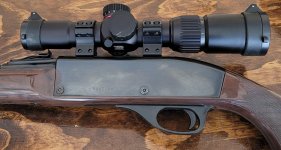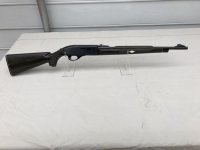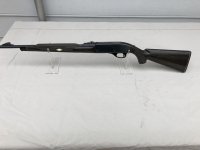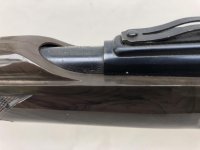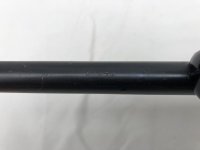IMHO the Nylon 66 is the best 22lr rifle made for sportsmen for several valid reasons.
That said; everytime I go to a gun show there are several for sale. Each has rust on the blued metal clamshell portion of the gun.
Heads Up:
The clamshell "is the receiver" even though it does not have any moving parts in it, it has the serial number on it so that is why the ATF classified it as the receiver. If you can find a clamshell for sale and you want to be compliant it must be sent by an FFL to an FFL.
My Nylon 66 even with constant oiling still starts rusting and over time the dull rust rough finish is permanent.
There is a nickel model of the Nylon 66 which does not seem to have the same rusting problem.
My theory on why all these rifles are rusty:
- The clamshell has a brushed finish and is blued.
- The blue is not deep and scratches very easily.
- Also you carry the rifle by holding the clamshell part of the rifle with your hand.
Requesting suggestions to stop the rusting on the clamshell.
- Would polishing smooth and do deep penetrating rebluing be helpful?
I sadly guess there is no way to stop the rusting with any kind of blue job due to the carrying the rifle with your bare hands.
I do not want to really do it; but Cerakote Finish may be the only solution.
For those of you who are not sure what the Nylon 66 is I have attached a photo of mine.
Also is a photo of the mostly permanent rust area in the close-up of of the clamshell, rust is on the forward edge of the clamshell.
Thank you for your input and suggestions,
MartyD
That said; everytime I go to a gun show there are several for sale. Each has rust on the blued metal clamshell portion of the gun.
Heads Up:
The clamshell "is the receiver" even though it does not have any moving parts in it, it has the serial number on it so that is why the ATF classified it as the receiver. If you can find a clamshell for sale and you want to be compliant it must be sent by an FFL to an FFL.
My Nylon 66 even with constant oiling still starts rusting and over time the dull rust rough finish is permanent.
There is a nickel model of the Nylon 66 which does not seem to have the same rusting problem.
My theory on why all these rifles are rusty:
- The clamshell has a brushed finish and is blued.
- The blue is not deep and scratches very easily.
- Also you carry the rifle by holding the clamshell part of the rifle with your hand.
Requesting suggestions to stop the rusting on the clamshell.
- Would polishing smooth and do deep penetrating rebluing be helpful?
I sadly guess there is no way to stop the rusting with any kind of blue job due to the carrying the rifle with your bare hands.
I do not want to really do it; but Cerakote Finish may be the only solution.
For those of you who are not sure what the Nylon 66 is I have attached a photo of mine.
Also is a photo of the mostly permanent rust area in the close-up of of the clamshell, rust is on the forward edge of the clamshell.
Thank you for your input and suggestions,
MartyD


